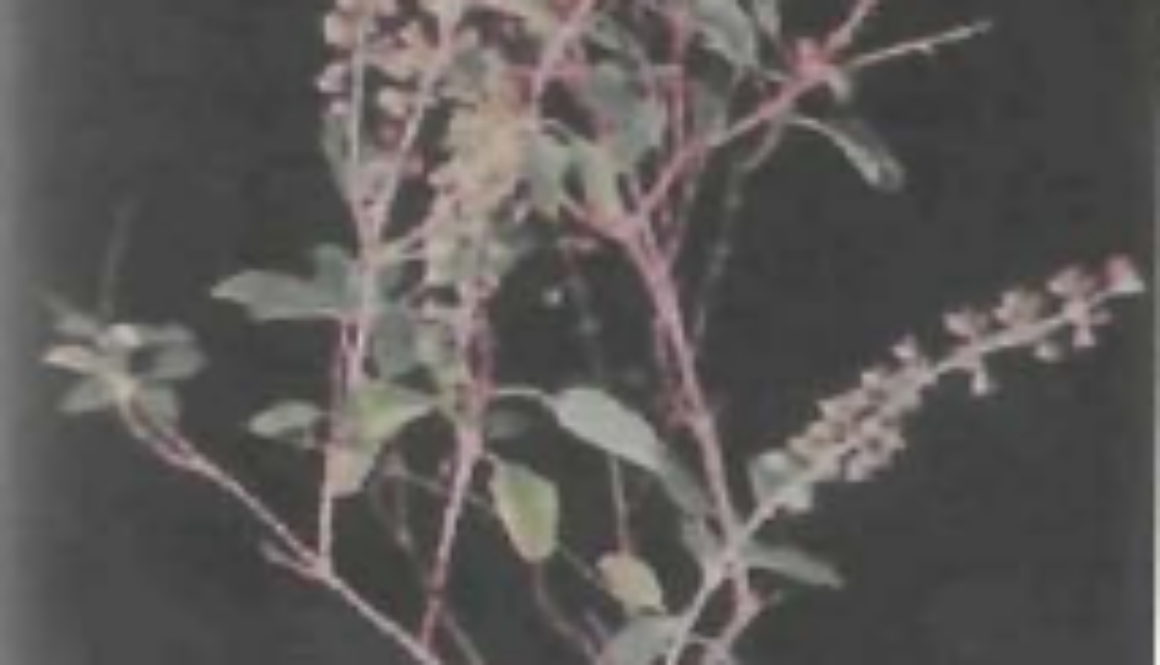Tulsi
Common wild plant all over the area and planted in the garden, temples and homes as pot herb. It is much branched erect, stout and strongly aromatic perennial hairy shrub. Leaves are obovate smooth and purplish pink. Flowers are small purplish born in close whorled racemes. Fruit is minute sub globose dry nutlets enclosed in the enlarged membranous calyx. The seeds are small and yellowish brown or reddish in colour. Flowering and fruiting through out the year.
Part used: Whole plant
Usage: A decoction of leaves is an effective remedy for bronchitis, asthma, cough, cold, fever, sore throat, and neuralgia. Juice of the leaves with honey is used in the treatment of kidney -stone and for expelling intestinal
worms. Juice is also beneficial in the treatment of skin diseases, eye disorder, earache, and in insect bite. Leaves are also quite effective for ulcer and infection in the mouth. Dried leaves powder mixed with mustard oil good for pyorrhea. Leaves paste in curd is used for the treatment of cancer. Root decoction is diaphoretic in treatment of malarial fever. A paste of fresh leaves applied on boils, mosquito bites and urticaria. Cold infusion of seeds is useful in dysentery, constipation and other stomach problems. The seed oil possesses antibacterial and insecticidal
property, hence acts as mosquito replant.
Agrotechniques : Grows well in the sandy loam soil. Saplings are raised in nursery in April-June and after rains transplanted at a distance of 40×40 cm. Irriga60n and weeding at 15 days interval. Leaves cut after 3 to 4 months and dried in shade. 2 cuttings of leaves can be taken in the year. Seeds are also collected from dried inflorescence.

